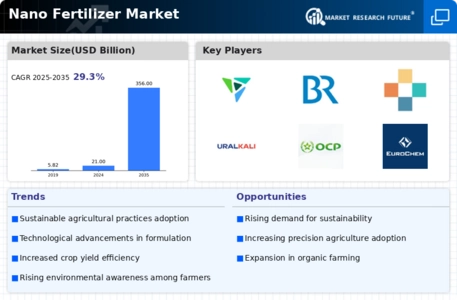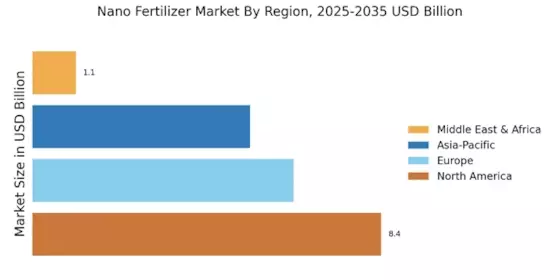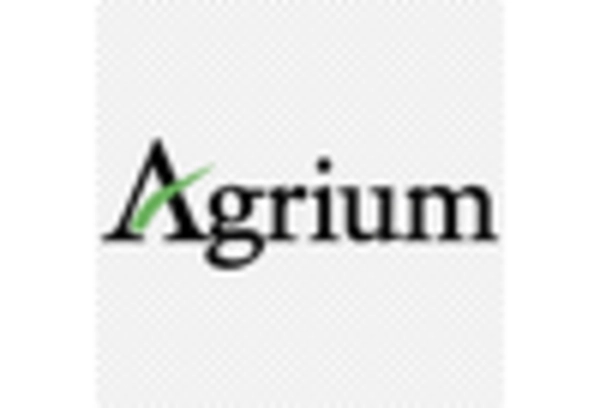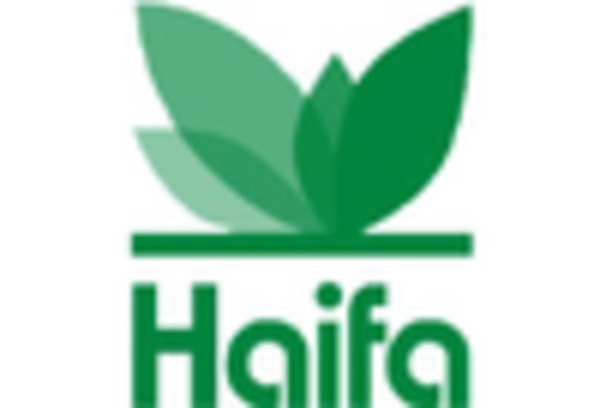Environmental Sustainability
The Nano Fertilizer Market is significantly influenced by the growing emphasis on environmental sustainability. Traditional fertilizers often lead to soil degradation and water pollution, raising concerns among consumers and regulators alike. Nano fertilizers, on the other hand, are designed to minimize these adverse effects. They require smaller quantities to achieve the same or better results, thereby reducing the overall chemical load on the environment. The market for nano fertilizers is projected to grow as more farmers adopt sustainable practices that align with environmental regulations. According to recent estimates, the adoption of nano fertilizers could reduce the carbon footprint of agriculture by up to 20%. This shift towards eco-friendly solutions is likely to bolster the Nano Fertilizer Market as stakeholders seek to balance productivity with environmental stewardship.
Rising Awareness Among Farmers
The Nano Fertilizer Market is witnessing a notable increase in awareness among farmers regarding the benefits of nano fertilizers. Educational initiatives and outreach programs are playing a crucial role in disseminating information about the advantages of these innovative products. Farmers are becoming more informed about the potential for higher yields, reduced environmental impact, and cost-effectiveness associated with nano fertilizers. As a result, there is a growing willingness to adopt these products, which is expected to drive market growth. Recent surveys indicate that over 60% of farmers are considering the use of nano fertilizers in their operations. This shift in mindset is likely to enhance the Nano Fertilizer Market, as more farmers recognize the long-term benefits of integrating these advanced fertilizers into their agricultural practices.
Supportive Government Policies
The Nano Fertilizer Market is being positively impacted by supportive government policies aimed at promoting sustainable agricultural practices. Many governments are recognizing the potential of nano fertilizers to enhance food security while minimizing environmental harm. As a result, various initiatives and subsidies are being introduced to encourage the adoption of these fertilizers. For instance, some countries have implemented financial incentives for farmers who choose to use eco-friendly fertilizers, including nano options. This regulatory support is expected to stimulate market growth, with projections indicating a potential increase in market size by 25% over the next five years. Such policies not only facilitate the transition to sustainable farming but also position the Nano Fertilizer Market as a key player in the future of agriculture.
Increased Agricultural Productivity
The Nano Fertilizer Market is experiencing a surge in demand due to the need for enhanced agricultural productivity. As the global population continues to rise, the pressure on food production systems intensifies. Nano fertilizers, with their ability to improve nutrient uptake efficiency, are becoming a preferred choice among farmers. Studies indicate that these fertilizers can increase crop yields by up to 30% compared to conventional fertilizers. This increase in productivity is crucial for meeting the food demands of an expanding population, thereby driving the growth of the Nano Fertilizer Market. Furthermore, the ability of nano fertilizers to reduce nutrient loss through leaching and volatilization contributes to their appeal, as they promote sustainable farming practices while ensuring higher returns for farmers.
Technological Innovations in Agriculture
The Nano Fertilizer Market is benefiting from rapid technological innovations in agriculture. Advances in nanotechnology have enabled the development of fertilizers that are not only more effective but also tailored to specific crop needs. These innovations include the encapsulation of nutrients at the nanoscale, which enhances their availability to plants. The integration of smart farming technologies, such as precision agriculture, further complements the use of nano fertilizers. By utilizing data analytics and IoT devices, farmers can optimize fertilizer application, leading to improved crop health and yield. The market is projected to expand as these technologies become more accessible, with estimates suggesting a compound annual growth rate of over 15% for the Nano Fertilizer Market in the coming years. This trend indicates a shift towards more efficient and data-driven agricultural practices.


















Leave a Comment